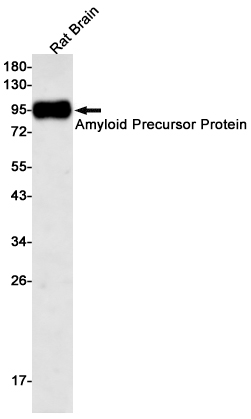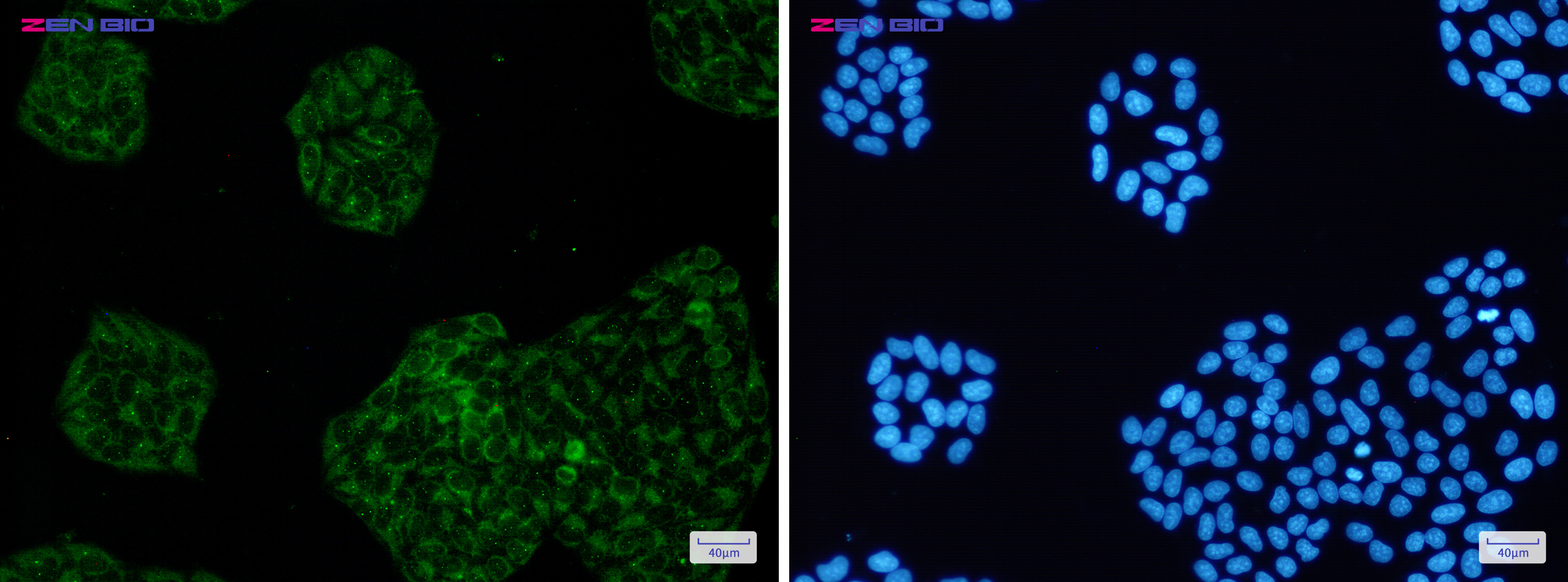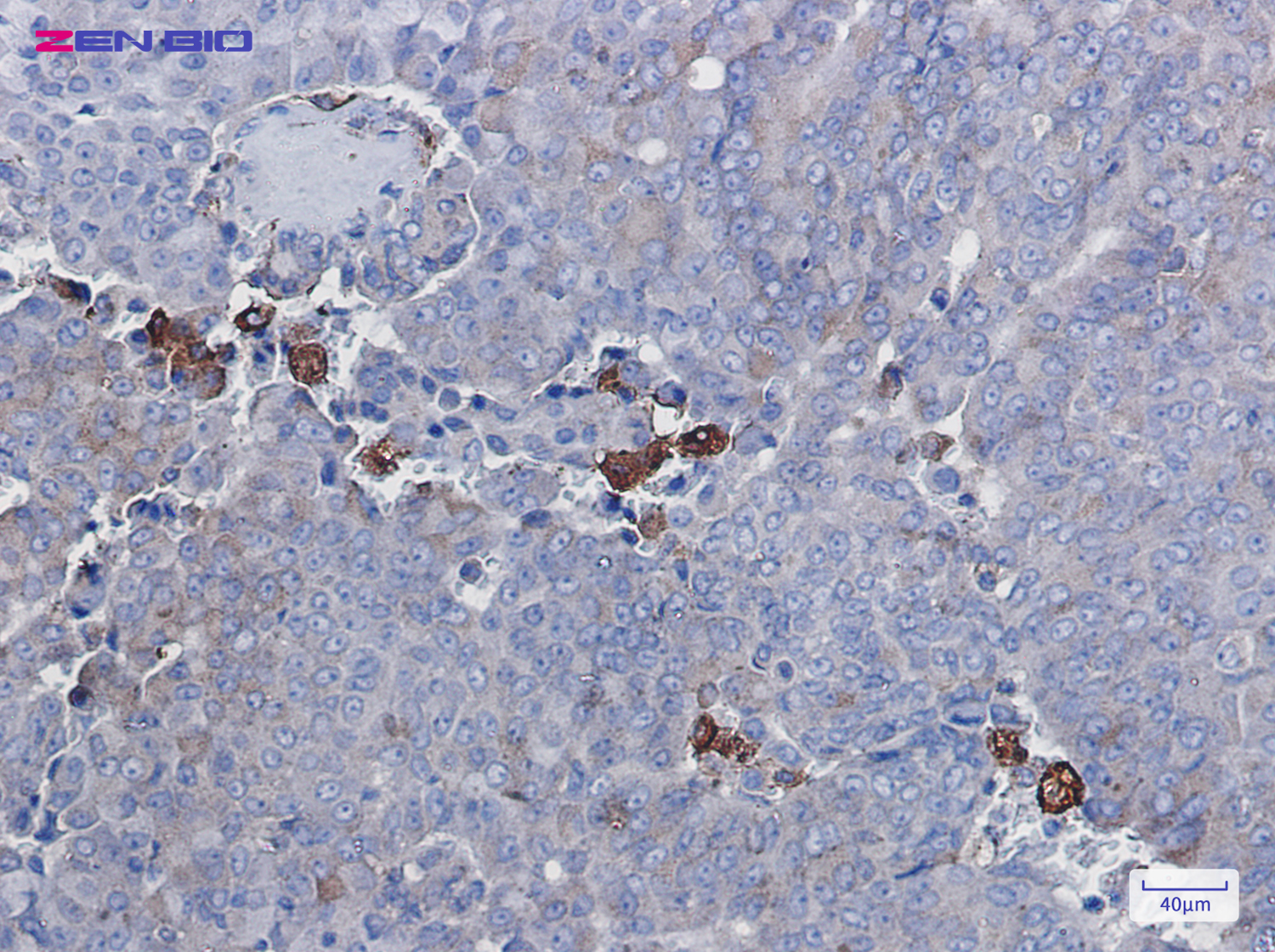-
Product Name
Anti-Amyloid Precursor Protein Rabbit antibody
- Documents
-
Description
Amyloid Precursor Protein Rabbit polyclonal antibody
-
Tested applications
WB, IHC-P, ICC/IF, FC
-
Species reactivity
Human, Mouse, Rat
-
Alternative names
APP antibody
-
Isotype
Rabbit IgG
-
Preparation
Antigen: A synthetic peptide of human Amyloid Precursor Protein
-
Clonality
Polyclonal
-
Formulation
Supplied in 50nM Tris-Glycine(pH 7.4), 0.15M Nacl, 40%Glycerol, 0.01% sodium azide and 0.05% BSA.
-
Storage instructions
Store at -20°C. Stable for 12 months from date of receipt.
-
Applications
WB: 1/1000-1/5000
IHC: 1/20
ICC/IF: 1/20
FC: 1/20
-
Validations

Western blot detection of Amyloid Precursor Protein in Rat Brain lysates using Amyloid Precursor Protein Rabbit pAb(1:500 diluted).Predicted band size:87kDa.Observed band size:100kDa.

Immunocytochemistry of Amyloid Precursor Protein(green) in Hela cells using Amyloid Precursor Protein Rabbit pAb at dilution 1/50, and DAPI(blue)

Immunohistochemistry of Amyloid Precursor Protein in paraffin-embedded Human breast cancer tissue using Amyloid Precursor Protein Rabbit pAb at dilution 1/100
-
Background
Swiss-Prot Acc.P05067.Functions as a cell surface receptor and performs physiological functions on the surface of neurons relevant to neurite growth, neuronal adhesion and axonogenesis. Involved in cell mobility and transcription regulation through protein-protein interactions. Can promote transcription activation through binding to APBB1-KAT5 and inhibits Notch signaling through interaction with Numb. Couples to apoptosis-inducing pathways such as those mediated by G(O) and JIP. Inhibits G(o) alpha ATPase activity . Acts as a kinesin I membrane receptor, mediating the axonal transport of beta-secretase and presenilin 1. Involved in copper homeostasis/oxidative stress through copper ion reduction. In vitro, copper-metallated APP induces neuronal death directly or is potentiated through Cu2+-mediated low-density lipoprotein oxidation. Can regulate neurite outgrowth through binding to components of the extracellular matrix such as heparin and collagen I and IV. The splice isoforms that contain the BPTI domain possess protease inhibitor activity. Induces a AGER-dependent pathway that involves activation of p38 MAPK, resulting in internalization of amyloid-beta peptide and leading to mitochondrial dysfunction in cultured cortical neurons. Provides Cu2+ ions for GPC1 which are required for release of nitric oxide (NO) and subsequent degradation of the heparan sulfate chains on GPC1.
Related Products / Services
Please note: All products are "FOR RESEARCH USE ONLY AND ARE NOT INTENDED FOR DIAGNOSTIC OR THERAPEUTIC USE"
